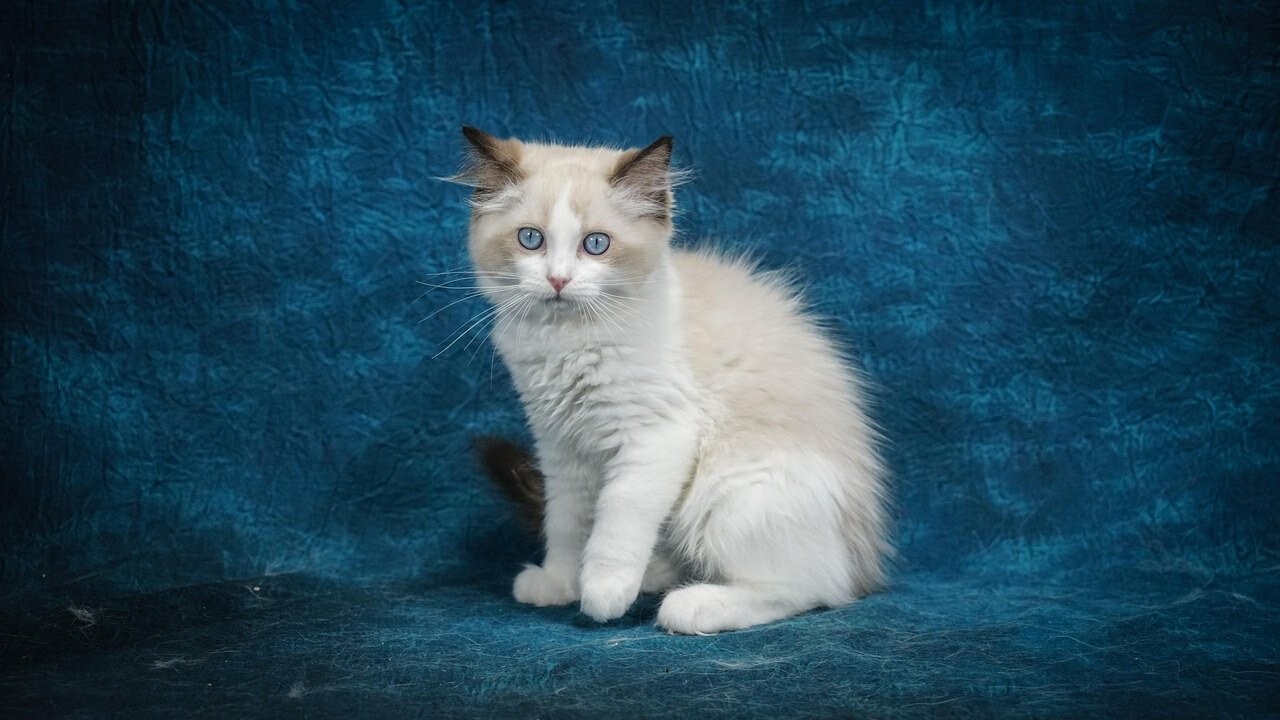The Ultimate Guide to Finding the Best Vacuum for Cat Litter
Cats are wonderful companions, but their litter can be a challenge to clean up. Whether you’re dealing with fine dust, stray pellets, or stubborn clumps, having the right vacuum cleaner can make all the difference. In this guide, we’ll explore what makes a vacuum ideal for cat litter cleanup and highlight some of the best options available. With practical tips and insights, you’ll be well-equipped to keep your home fresh, clean, and free of pesky litter messes.
Key Features to Look for in a Cat Litter Vacuum
When choosing a vacuum specifically for cat litter, certain features can make your cleaning tasks easier and more efficient. Here’s what to consider:
Strong Suction Power
A powerful motor ensures that even the tiniest particles of litter are picked up without leaving residue behind.Sealed Filtration System
This prevents fine dust from escaping back into the air, keeping your indoor environment healthier.Specialized Attachments
Tools like crevice nozzles and brush heads help you reach tight spaces where litter often hides.Durable Build Quality
A robust design ensures the vacuum can handle frequent use and resist wear and tear over time.Ease of Emptying
A hassle-free disposal system minimizes contact with waste and keeps the process hygienic.
Choosing a vacuum with these features will save you time and effort while ensuring a thorough clean every time.
Top Benefits of Using a Specialized Cat Litter Vacuum
Investing in a high-quality vacuum designed for cat litter offers numerous advantages. Here’s why it’s worth considering:
Efficient Cleanup
These vacuums are engineered to pick up both dry litter and sticky clumps effortlessly.Improved Air Quality
Advanced filtration systems trap allergens and dust, making your home safer for everyone.Time-Saving Convenience
With specialized tools and strong suction, you can clean faster and more effectively than ever before.Hygienic Operation
Many models come with antimicrobial components and easy-to-clean bins for added peace of mind.Durability and Longevity
Designed to withstand daily use, these vacuums offer long-term value for pet owners.
By opting for a vacuum tailored to cat litter, you’ll enjoy a cleaner home and a happier lifestyle.
Check this guide 👉Top 4 Best Wooden Cat Litter Enclosures for a Stylish Home!
Check this guide 👉 Top 5 Ultimate Vacuums for Pet Hair Removal!
Check this guide 👉Top 3 Best Cat Litter Deodorizers for a Fresh Home!

Feature | Why It Matters |
|---|---|
Strong Suction Power | Ensures no litter residue is left behind. |
Sealed Filtration System | Prevents dust and allergens from escaping. |
Specialized Attachments | Helps clean hard-to-reach areas efficiently. |
Easy Disposal Mechanism | Keeps the cleaning process hygienic and simple. |
Durable Construction | Provides reliability and longevity for frequent use. |
Common Challenges When Cleaning Cat Litter
While owning a cat brings immense joy, cleaning up after them isn’t always straightforward. Here are some common issues pet owners face:
Fine Dust Everywhere
Lightweight litter particles tend to scatter easily, settling on furniture and floors.Sticky Clumps
Wet or semi-dry clumps can stick to surfaces, requiring extra effort to remove.Odor Control
Even with regular cleaning, lingering smells can become an issue if not addressed properly.Hard-to-Reach Spots
Corners, cracks, and under furniture are notorious for trapping stray bits of litter.Frequent Messes
Active cats often track litter across the house, increasing the need for consistent cleaning.
Understanding these challenges helps you choose a vacuum that addresses them effectively.
Tips for Maintaining Your Vacuum for Longevity
To get the most out of your cat litter vacuum, proper maintenance is essential. Follow these tips to ensure it stays in top condition:
Regular Filter Cleaning
Wash or replace filters as recommended by the manufacturer to maintain optimal performance.Empty the Dustbin Frequently
Avoid letting debris accumulate, as this can reduce suction power and cause odors.Inspect Attachments Regularly
Check for clogs or damage to ensure attachments function correctly during cleaning sessions.Store Properly
Keep the vacuum in a dry, cool place to prevent mold or mildew buildup.Schedule Deep Cleans
Occasionally disassemble the vacuum (if possible) for a thorough wipe-down and inspection.
With proper care, your vacuum will serve you faithfully for years to come.
Common Types of Cat Litter and Their Impact on Cleaning
Different types of cat litter come with unique cleaning challenges. Understanding these variations can help you choose the right vacuum for your needs.
Clay Litter
Clay litter is heavy and often dusty, requiring vacuums with strong suction to prevent residue.Silica Gel Crystals
These lightweight crystals can scatter easily, demanding vacuums with excellent filtration systems.Biodegradable Litter
Made from natural materials like corn or wheat, this litter may clump differently and require specialized tools.Paper-Based Litter
Soft and less abrasive, paper-based litter is easier to clean but can leave fine particles behind.Flushable Litter
Designed to dissolve in water, flushable litter still needs thorough cleanup to avoid lingering smells.
Choosing a vacuum that adapts to your preferred litter type ensures a more efficient cleaning process.
How to Prepare Your Home for Effective Litter Cleanup
Preparation plays a crucial role in making your vacuuming sessions more effective. Here’s how to get your home ready:
Create a Cleaning Schedule
Establish a routine to vacuum high-traffic areas daily and other spaces weekly.Confine Litter to Specific Zones
Place mats around the litter box to minimize tracking and contain messes.Declutter Before Vacuuming
Remove obstacles like toys or furniture legs to ensure smooth navigation.Use Air Fresheners Strategically
Place odor-neutralizing products near litter-prone areas to complement your cleaning efforts.Invest in Quality Mats
Use mats designed to trap litter particles before they spread across the floor.
With a little preparation, you’ll make the most of your vacuum’s capabilities and keep your home spotless.
Signs You Need to Upgrade Your Current Vacuum
If you’re struggling with your current vacuum, it might be time for an upgrade. Look out for these warning signs:
Decreased Suction Power
If your vacuum struggles to pick up even small debris, its motor may be losing efficiency.Frequent Clogging
A vacuum that clogs often may not be suitable for handling cat litter effectively.Excessive Dust in the Air
Poor filtration systems can release dust back into your home, worsening air quality.Unpleasant Odors
Lingering smells from the vacuum itself indicate improper hygiene or inadequate cleaning mechanisms.Wear and Tear
Visible damage or persistent malfunctions signal that it’s time for a replacement.
Upgrading to a vacuum specifically designed for cat litter can save you time, effort, and frustration in the long run.
Frequently Asked Questions About Cat Litter Vacuums
Can I use a regular vacuum for cat litter?
While possible, regular vacuums may lack the suction power and filtration needed for effective litter cleanup. Specialized models are recommended.
How do I prevent my vacuum from clogging with litter?
Use a vacuum with a strong motor and wide intake nozzle, and avoid vacuuming excessively wet clumps.
Are robotic vacuums suitable for cat litter?
Some robotic vacuums can handle dry litter, but they may struggle with larger clumps or sticky messes.
What type of filter is best for cat litter vacuums?
HEPA filters are ideal as they trap fine particles and allergens, improving air quality.
How often should I clean my vacuum?
Clean the dustbin after each use and inspect filters weekly to ensure peak performance.
Final Thoughts: Keep Your Home Spotless with the Right Vacuum
Finding the best vacuum for cat litter doesn’t have to be overwhelming. By focusing on key features like suction power, filtration, and ease of use, you can select a model that meets your needs perfectly. Remember to maintain your vacuum regularly to extend its lifespan and maximize efficiency. With the right tool in hand, you’ll enjoy a cleaner, fresher home—and more quality time with your beloved feline friend!
Can a Cat Die from a Cold? Best 7 Expert Tips! Learn how to identify, treat, and prevent feline colds while understanding when to seek veterinary care for your cat’s health.
Cat Screaming for Food: Best 7 Expert Tips! Discover effective strategies to manage your cat's food-related vocalizations and create a peaceful feeding routine.
Aspiration Pneumonia in Cats: Best 7 Expert Tips! Discover causes, symptoms, and treatment advice to protect your cat’s respiratory health and ensure a speedy recovery.
Hip Dysplasia in Cats: Best 7 Expert Tips! Discover expert advice on managing hip dysplasia in cats, from symptoms and prevention to treatment options for a happier, healthier feline life.





